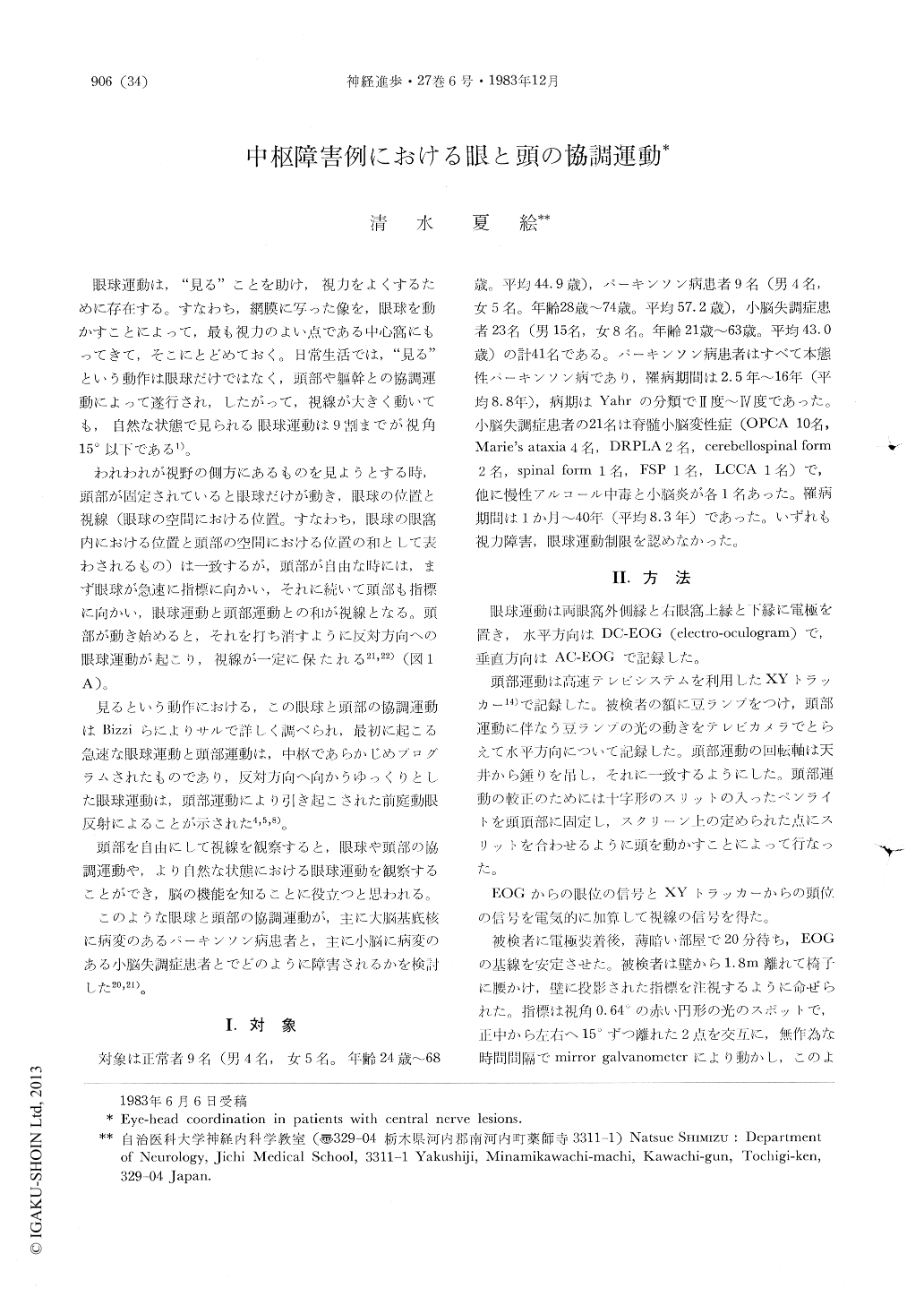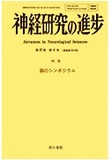Japanese
English
- 有料閲覧
- Abstract 文献概要
- 1ページ目 Look Inside
眼球運動は,"見る"ことを助け,視力をよくするために存在する。すなわち,網膜に写った像を,眼球を動かすことによって,最も視力のよい点である中心窩にもってきて,そこにとどめておく。日常生活では,"見る"という動作は眼球だけではなく,頭部や躯幹との協調運動によって遂行され,したがって,視線が大きく動いても,自然な状態で見られる眼球運動は9割までが視角15°以下である1)。
われわれが視野の側方にあるものを見ようとする時,頭部が固定されていると眼球だけが動き,眼球の位置と視線(眼球の空間における位置。すなわち,眼球の眼窩内における位置と頭部の空間における位置の和として表わされるもの)は一致するが,頭部が自由な時には,まず眼球が急速に指標に向かい,それに続いて頭部も指標に向かい,眼球運動と頭部運動との和が視線となる。頭部が動き始めると,それを打ち消すように反対方向への眼球運動が起こり,視線が一定に保たれる21,22)(図1A)。
Abstract
Eye-head coordination in patients with Par-kinsonism and cerebellar ataxia was investigated and compared with that of normals.
Head movements were registered by an X-Y tracker, using a high-speed TV-camera system. Horizontal eye movements were recorded by elec-trooculogram (EOG) with DC coupling. Gaze was computed electrically by summing horizontal eye-position signals and head-position signals. A round, red, luminous target of 0.64° in visual angle was projected continuously on the screen and moved alternately 15° right and left from the center at irregular intervals by a mirror galvanometer.

Copyright © 1983, Igaku-Shoin Ltd. All rights reserved.


